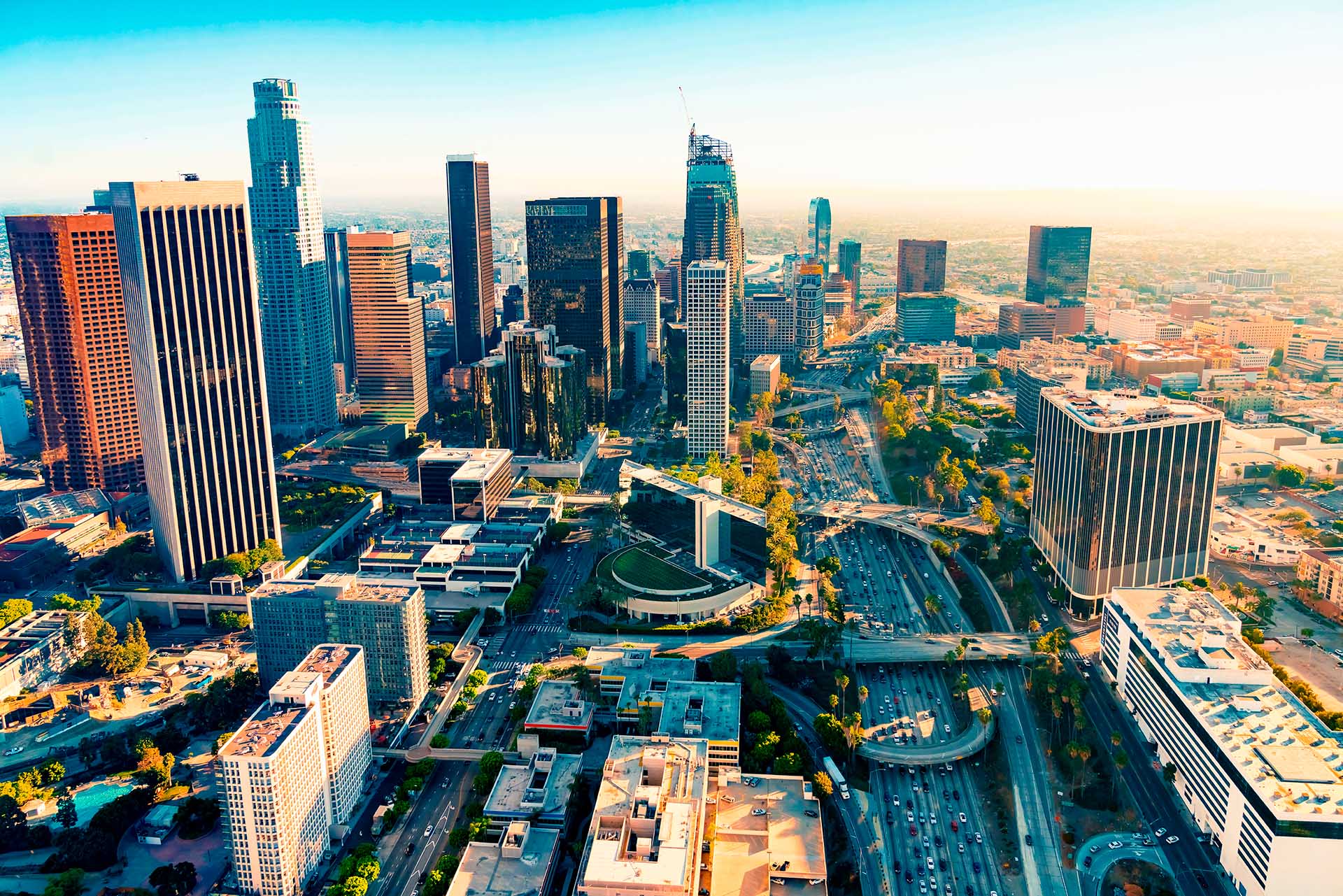Los Angeles, the City of Angels, is renowned for its sprawling urban landscape, iconic landmarks, and vibrant culture. While it may not have the same density of skyscrapers as New York City or Chicago, Los Angeles boasts an impressive skyline dominated by architectural marvels that reflect its status as a global metropolis. This guide explores the tallest buildings la Los Angeles, delving into their history, design, and significance in shaping the city’s identity.
1. Wilshire Grand Center (1,100 feet)
- Height: 1,100 feet (335 meters)
- Floors: 73
- Year Completed: 2017
- Architect: AC Martin Partners
- Primary Use: Mixed-use (hotel, office, and observation deck)
The Wilshire Grand Center is the tallest building la in Los Angeles and the tallest structure west of the Mississippi River. Located in the heart of downtown LA, this sleek, modern skyscraper features a distinctive glass façade and a spire that lights up at night, making it a standout feature of the city’s skyline. The building is home to the InterContinental Los Angeles Downtown hotel, which offers luxurious accommodations and a stunning open-air observation deck on the 70th floor, providing panoramic views of the city.
The Wilshire Grand Center was designed to withstand seismic activity, a critical consideration in earthquake-prone Southern California. Its construction marked a significant milestone in LA’s architectural evolution, showcasing cutting-edge engineering and sustainable design.
2. U.S. Bank Tower (1,018 feet)
- Height: 1,018 feet (310 meters)
- Floors: 73
- Year Completed: 1989
- Architect: Henry N. Cobb of Pei Cobb Freed & Partners
- Primary Use: Office
For nearly three decades, the U.S. Bank Tower held the title of the tallest building in la Los Angeles. Known for its distinctive crown-like top, this skyscraper is a symbol of the city’s financial district. It gained widespread recognition as the setting for dramatic scenes in movies like Independence Day and The Day After Tomorrow.
The tower features a SkySpace observation deck on the 70th floor, which includes a glass slide extending out from the building, offering visitors a thrilling experience and breathtaking views. Despite losing its title as the tallest building to the Wilshire Grand Center, the U.S. Bank Tower remains an iconic part of LA’s skyline.
3. Aon Center (858 feet)
- Height: 858 feet (262 meters)
- Floors: 62
- Year Completed: 1973
- Architect: Charles Luckman
- Primary Use: Office
The Aon Center, originally known as the United California Bank Building, is one of the most recognizable skyscrapers in Los Angeles. Its minimalist design and white marble exterior make it a standout in the downtown skyline. The building underwent a major renovation in the 1990s to replace its marble cladding with more durable materials, ensuring its longevity.
Located in the Bunker Hill district, the Aon Center is a hub for corporate offices and offers stunning views of the city and the Pacific Ocean. Its prime location and timeless design have cemented its status as a key landmark in LA.
4. Two California Plaza (750 feet)
- Height: 750 feet (229 meters)
- Floors: 52
- Year Completed: 1992
- Architect: Arthur Erickson
- Primary Use: Office
Two California Plaza is part of the larger California Plaza complex, which includes office towers, residential buildings, and cultural spaces like the Museum of Contemporary Art (MOCA). Designed by renowned Canadian architect Arthur Erickson, the building features a postmodern design with a sleek glass exterior and a stepped profile.
The plaza surrounding the building is a popular gathering spot, hosting events and festivals throughout the year. Two California Plaza is a testament to LA’s commitment to blending urban development with cultural and recreational spaces.
5. Gas Company Tower (749 feet)
- Height: 749 feet (228 meters)
- Floors: 52
- Year Completed: 1991
- Architect: Pei Cobb Freed & Partners
- Primary Use: Office
The Gas Company Tower is another prominent feature of downtown Los Angeles. Its unique design includes a curved façade and a crown-like structure at the top, which is illuminated at night. The building is home to the Southern California Gas Company and other major tenants.
The tower’s design incorporates energy-efficient features, reflecting the growing emphasis on sustainability in modern architecture. Its striking appearance and prime location make it a key part of LA’s skyline.
6. Bank of America Plaza (735 feet)
- Height: 735 feet (224 meters)
- Floors: 55
- Year Completed: 1974
- Architect: Albert C. Martin & Associates
- Primary Use: Office
The Bank of America Plaza is one of the most iconic buildings in Los Angeles, known for its distinctive stepped design and pyramid-shaped crown. Located in the financial district, the building has been a symbol of corporate power and architectural innovation since its completion in the 1970s.
The tower’s design allows for ample natural light, creating a pleasant working environment for its occupants. Its timeless design and central location ensure its continued relevance in LA’s ever-evolving skyline.
7. 777 Tower (725 feet)
- Height: 725 feet (221 meters)
- Floors: 52
- Year Completed: 1991
- Architect: César Pelli
- Primary Use: Office
Designed by acclaimed architect César Pelli, the 777 Tower is a striking addition to downtown Los Angeles. Its cylindrical shape and reflective glass exterior give it a futuristic appearance, while its interior features an open atrium that floods the space with natural light.
The tower is a prime example of postmodern architecture and has won numerous awards for its innovative design. Its central location and unique aesthetic make it a standout in LA’s skyline.
8. Wells Fargo Tower (723 feet)
- Height: 723 feet (220 meters)
- Floors: 54
- Year Completed: 1983
- Architect: Skidmore, Owings & Merrill
- Primary Use: Office
The Wells Fargo Tower is a sleek, modernist skyscraper located in the heart of downtown Los Angeles. Its black glass exterior and minimalist design make it a striking presence in the city’s skyline. The tallest building is home to Wells Fargo and other major corporations, making it a hub of financial activity.
The tower’s design emphasizes functionality and efficiency, with spacious floor plans and state-of-the-art amenities. Its timeless design and prime location ensure its continued prominence in LA’s urban landscape.
9. Figueroa at Wilshire (699 feet)
- Height: 699 feet (213 meters)
- Floors: 53
- Year Completed: 1990
- Architect: Albert C. Martin & Associates
- Primary Use: Office
Figueroa at Wilshire, also known as the Sanwa Bank Building, is a prominent skyscraper in downtown Los Angeles. Its sleek, modernist design and reflective glass exterior make it a standout in the city’s skyline. The building is home to a mix of corporate offices and retail spaces, making it a vibrant part of the urban fabric.
The tower’s design emphasizes sustainability and energy efficiency, reflecting the growing emphasis on green building practices. Its central location and striking appearance ensure its continued relevance in LA’s skyline.
10. City National Tower (699 feet)
- Height: 699 feet (213 meters)
- Floors: 52
- Year Completed: 1972
- Architect: Albert C. Martin & Associates
- Primary Use: Office
The City National Tower, also known as the ARCO Tower, is a classic example of modernist architecture in Los Angeles. Its sleek, rectangular design and reflective glass exterior make it a timeless addition to the city’s skyline. The building is home to City National Bank and other major tenants, making it a hub of financial activity.
The tower’s design emphasizes functionality and efficiency, with spacious floor plans and state-of-the-art amenities. Its central location and striking appearance ensure its continued prominence in LA’s urban landscape.
Conclusion
Los Angeles may not be known for its skyscrapers in the same way as other major cities, but its skyline is a testament to its growth, innovation, and architectural diversity. From the towering Wilshire Grand Center to the iconic U.S. Bank Tower, each tallest building in la a story of ambition, creativity, and resilience. As the city continues to evolve, its skyline will undoubtedly reflect new trends and technologies, ensuring that Los Angeles remains a global leader in urban design and architecture. Whether you’re a local or a visitor, exploring these towering landmarks offers a unique perspective on the City of Angels.




